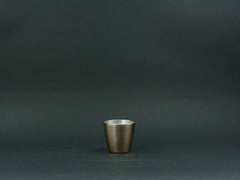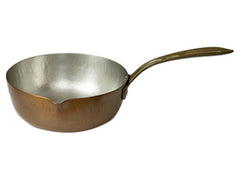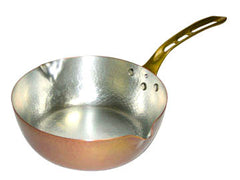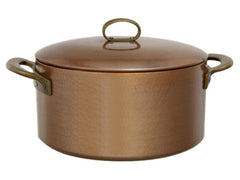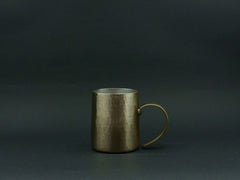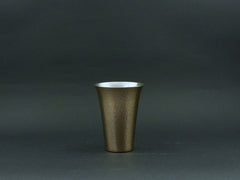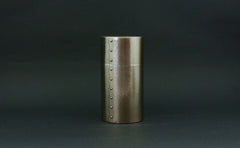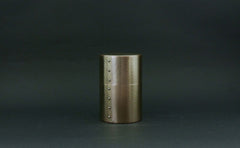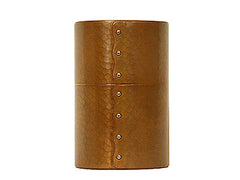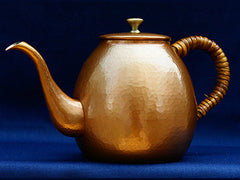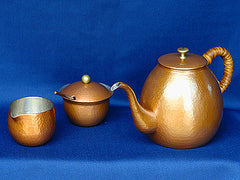What is hammered copperware?
Hammered copperware, meaning copperware struck with a hammer, is a forging technique in which a single copper plate is repeatedly annealed and hammered with various hammers, large and small, to create vessels. It was introduced to Tsubame, Niigata, in the mid-Edo period and has been passed down and developed for approximately 200 years.
Fukido was established in 1945 by the previous owner, Fujii Tomiji, who opened his own business. Second-generation owner Fujii Hiroshi and third-generation owner Fujii Ken have been producing hammered copperware in Tsubame City, Niigata Prefecture, for three generations since the company's founding. The beauty of the shapes and diverse patterns created by Fujii's meticulous handwork is outstanding, and his high level of skill has led to the company receiving numerous awards.
・Niigata Prefecture Lifestyle and Culture Creative Industry Promotion Association
IDS Design Competition IDS Encouragement Award (1995)
・Niigata Prefecture Recommended Excellent Product Special Award (1995)
・Niigata Prefecture Tsubame City Product Design Competition Encouragement Award (1996)
・Niigata Prefecture Lifestyle and Culture Creative Industry Promotion Association IDS THE BEST C Division 2nd Place (2000)
・Niigata Industrial Creation Organization IDS Design Competition IDS Encouragement Award (2006)

-What is the appeal of Fujii's hammered copperware?
These are tools that last a lifetime, born from the wonder of copper and the joy of shaping.
Hammered copperware means copperware that is hammered and raised. A single copper plate is repeatedly annealed and hammered with various hammers, large and small, to create a variety of vessel shapes.
The hammering process tightens the metal and increases its strength, resulting in exceptional durability.
The more you use it, the more mellow and refined it becomes, becoming a vessel of ever-increasing quality.
Furthermore, our products are treated to soften the copper's darkening, allowing you to enjoy its refined copper texture for years to come.
Copper has thermal conductivity twice as strong as aluminum, five times as strong as iron, and 25 times as strong as stainless steel. Furthermore, the uneven surface created by careful hammering increases the surface area, further enhancing copper's excellent thermal conductivity.
This also allows water to boil quickly in kettles and pots. Also, when you pour a cold drink into a copper cup, the cup will become colder, giving you a particularly refreshing taste when you drink it. Try chilling the cup in the refrigerator for 5 to 10 minutes before drinking. It will be nicely chilled and delicious.

Caring for Hammered Copperware
Gently wipe with a soft cloth. The luster and patina will gradually increase, giving the piece a more refined appearance.
If you notice any dirt, wipe with a damp cloth, wring it out thoroughly, and then wipe off any excess water with a dry, soft cloth.
The process of making hammered copperware.
(1) Metal removal and cutting
Cut the copper plate to the appropriate size.

(2) Annealing
The copper plate is annealed in a fire.

(3) Launch
The annealed copper plate is hammered into shape using a variety of tools, including a metal backing, a wooden mallet, and a hammer.

(4) Annealing and firing
The copper plate hardens when hammered, so it is annealed and then hammered further to create the shape. *This process is repeated until the shape is complete.

(5) Molding
The finished shape is hammered to make the surface and shape even smoother (smoothing).

(6) Polishing and finishing
The surface is polished and then colored to finish it off. Kettles and copper pots are then tinned.

(7) Polishing, inspection, and completion
The product is polished, inspected, and then completed.
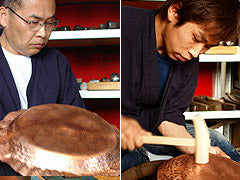
A word from the craftsman
Each piece is handcrafted, carefully hammered with a hammer and chisel, with the user's joy in mind. I would be delighted if the ease of use, durability, and warmth not found in mass-produced products are conveyed to the user.
